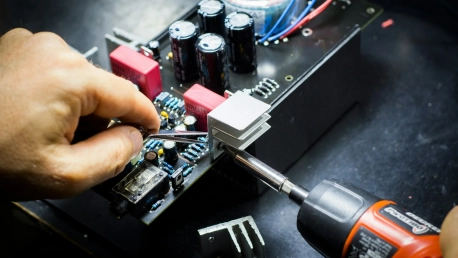Distinguishing between electrical and electronic devices is crucial for their appropriate use and optimal performance. Despite the common confusion between the two, they are fundamentally different. Electrical devices refer to tools that use electrical power to perform their primary function, which can be mechanical, heating, or lighting, among others. Examples include electric motors and toasters. In contrast, electronic devices control and manipulate the flow of electrons for tasks that include amplifying signals or computing data. These typically more complex devices include items like smartphones and laptops. By understanding these differences, one can better appreciate the specific roles and correct applications of various devices powered by electricity, thereby ensuring they function as intended and achieve maximum effectiveness.
Characteristics of Electrical Devices
Energy Conversion in Electrical Devices
Electrical devices are specifically engineered to transform electrical energy into other forms—like heat, as seen with electric heaters that warm spaces, or into light and kinetic energy. These devices harness the conductive properties of metals such as copper and aluminum to manage the flow of alternating current (AC). AC’s frequent changes in the direction of flow enable the operation of heavy-duty machinery and extensive systems that draw significant energy. As opposed to electronics that manipulate electron flow to perform specific tasks, these robust devices focus purely on energy conversion without regulation. Consequently, they tend to be larger and consume greater amounts of power. The application of alternating current is pivotal as it allows the functioning of devices at a scale that DC power wouldn’t practically or efficiently allow. This attribute of AC systems makes them indispensable in industrial and domestic environments where substantial energy transfer is a requirement.
Common Applications of Electrical Devices
Electrical devices such as washing machines, ovens, and vacuum cleaners are integral to our daily lives, both at home and in commercial settings. Designed to transmute electricity into functional energy, these devices perform various essential tasks that facilitate our routines. The average household is packed with these gadgets, underscoring their critical role in our day-to-day activities. These items often go unnoticed in our daily grind, yet they are the unsung heroes of the modern world, powering the machinery we rely on endlessly. It’s only when these devices break down that we truly realize the convenience they offer. As these tools have become ubiquitous in our lives, they embody the quiet but fundamental engines of contemporary lifestyles, propelling the appliances that are crucial for our everyday comforts and needs.
Characteristics of Electronic Devices
Functionality and Operation of Electronic Devices
Electronic devices are engineered to manage electron flow with precision using components like transistors and capacitors, built from semiconductor materials such as silicon. These devices require a steady stream of electrons provided by direct current (DC) to function properly, as opposed to the high-power transmission of alternating current (AC) used in electrical devices. The sophistication of electronics lies in their ability to carry out intricate tasks, especially in the realms of computing and communication. While electrical devices are the muscle, focusing on power delivery, electronic devices are more like the brain, prioritizing control and intricate processing. This contrast underpins much of our advanced technology, with electronic devices being integral to the fabric of modern life. Their role in data handling and connectivity makes them indispensable in an era increasingly defined by information and digital interaction.
Electronic Devices in Technology and Communication
Electronic gadgets like smartphones and laptops are the cornerstones of contemporary technology, packing immense computing power into compact footprints. These devices integrate functions such as high-speed data processing, sophisticated communications, and detailed imaging, all thanks to the advanced electronic circuits embedded within them. The precise manipulation of electrons is what enables these multifaceted tools to assume roles as communication devices, navigational aids, entertainment systems, and so much more. The meticulous control of electron flow is vital for the compactness and versatility of these devices, which have thoroughly transformed our daily activities, from work to social interaction. Thus, modern electronics are not just conduits of information and entertainment; they are also pivotal in shaping our connectivity and engagement with the world.









